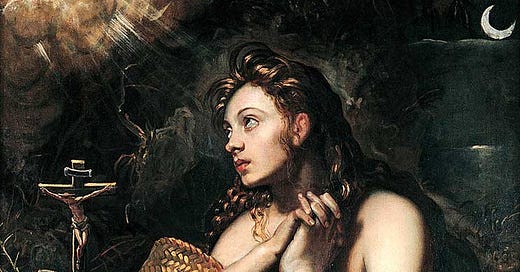The Forbidden Gospel of Mary Magdalene
Jesus and Mary Magdalene seem to have held a unique CTMU-like view of Reality.
What is the Gospel of Mary Magdelene?
The Gospel of Mary Magdelene1 is an ancient Christian text written in Coptic. It wasn’t included in the New Testament canon, but it offers a unique window into early Christian thought, particularly Gnostic elements. It also focuses on the role of Mary Magdalene, who is portrayed as an apostle and the first woman to see Jesus’ resurrection. Controversial theorists, like those behind The Da Vinci Code, have used the gospel to advance claims that Jesus was romantically involved with Mary Magdalene and appointed her leader of the church. This can not be reliably substantiated.
The most complete surviving fragment of the Gospel of Mary Magdelene dates to the late nineteenth century, when it was discovered in the Berlin Gnostic Codex (Papyrus Berolinensis 8502 or P.Gnosis). Other fragments of the Gospel of Mary Magdalene were later found in the Oxyrhynchus manuscripts, as well as a Greek version published in 1917 and 1938.2 Together, these fragments demonstrate that the gospel was widely circulated and held in high esteem in early Christian communities.



